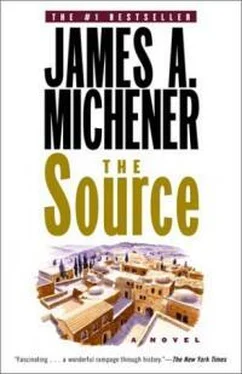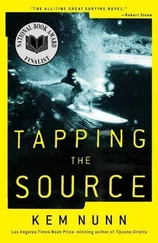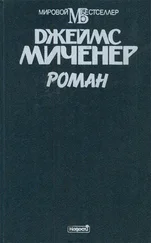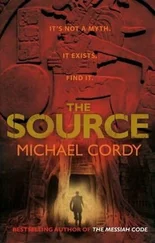And the impartial voice of history could have argued: “The truth lies somewhere in between. I can remember periods extending into centuries when Jew and Arab shared Safad in easy harmony. In the early days of Muhammad this was so. In the period of the Kabbalists there was no friction. And even in this century, prior to the great massacre of 1929, Jews felt free to live in the midst of the Arab quarter. On the other hand, I can recall periods of desolation. The Crusaders killed off every Jew in Safad. In 1834 there was a pitiful slaughtering, and I do not believe that Englishmen were governing in Saphet at that period. At this date who can remember exactly why the beautiful stairs were built? All I know is that from 1936 through 1948 the stairs kept two warring people apart; and at night, when the revolving searchlight on the police station flashed down the stairs, Jews and Arabs alike were afraid to cross over and molest the other.”
But on April 16, 1948, things changed swiftly, and as the English, in a stirring ceremony, handed the Arabs the keys to all the fortresses, all the high, protected points in town, and marched away with bagpipes playing, it became obvious that the war for Safad would begin at the stairs. If the Jews could hold there, they had a chance to hold the town.
Whiiiiiing! Zaaaaah! Across the fine gray stairs the Arab bullets began to whine. The withdrawing English had assured London that all Jews would be massacred within three days. The Arabs believed they could overrun the area in two. From all sides a constricting, dense, concentrated pressure began to strangle the Jewish quarter and during the first half-hour of fighting many Jewish families had evacuated the houses nearest the lovely stairs. Arab spotters cried, “They’re falling back.”
Zaaaaaah! Unnnnnnh! The bullets splattered into the mud walls of the Jewish houses and after an hour of fighting no Jews could be seen on the other side of the flight. The Arab commander, knowing what a psychological shock the capture of a bridgehead across the stairs would be, gave the order to move out, and in company force the assault was launched. “Itbah il Yahoud —Slaughter the Jews!” cried the Syrians, the Iraqis and the Lebanese as they leaped across the open space.
In the next few minutes Jewish boys and girls seemed to appear from everywhere, for Mem-Mem Bar-El, anticipating this Arab move, had his people well stationed. Moving out from a deserted house Ilana Hacohen fired with deadly calm. Little Vered in her boxlike hat came darting in with her submachine gun spurting. Gottesmann and Bar-El loomed up from a pile of rubble, throwing grenades, while from a roof smiling Nissim Bagdadi fired with cruel effect. The astonished Arabs fell back. They tried to drag their wounded across the stairs, then abandoned them.
“Cease fire!” Bar-El shouted, and the Jews retired. Along the stairs there was no sound but the whimpering of a young Arab from Mosul. And in the Arab quarter men were whispering, “Girls were fighting. With guns.” That night each side acknowledged that if there was going to be a massacre of Jews in Safad, it would not come easily, as in the past.
In the days that followed, Mem-Mem Bar-El issued orders which mobilized the Jewish population of Safad for the task of fortifying the outer rim. Trenches were to be dug connecting vantage points; houses had to be torn down to deny them to Arab snipers; roadblocks were required; and one hundred and seventy-three armed Jews dug in to hold off the assault of some six thousand Arab fighters. Every man and woman had a job to do, and Bar-El sustained in the town a kind of stubborn optimism.
But he failed to impress Rebbe Itzik, who refused to participate in the ungodly work. Each dawn he and his ten fur-hatted elders repaired to the Vodzher synagogue to contemplate the imminent destruction of Safad, and from a repetitious history they were able to select precedents for the manner in which a doomed body of Jews should behave in the last minutes before they perished. Judaism was the only religion with a specific prayer to be uttered “when the knife was at the throat, when the flames were at the feet,” and through the centuries this final reiteration of belief had been used “to lend sanctification to the Holy Name of God.” Peculiar grace had always been accorded those who died at alien hands while still proclaiming belief in the oneness of God, and Rebbe Itzik determined that when the Arabs finally overran the Vodzher Jews a new chapter would be added to the glorious record of Jewish martyrdom.
He was therefore disturbed on Monday morning when he found at his synagogue only seven Jews. “Where’s Schepsel and Avram?” he asked. He noticed that Shmuel was the other absentee. One of the old men said, “They’re breaking rocks,” and the little rebbe rushed out of the synagogue to locate his followers. He found them working under the direction of Mem-Mem Bar-El, breaking rocks taken from demolished houses. The resulting stones were to be jammed in between boards, thus providing bulwarks that would stop rifle bullets. Many cartloads of stones were needed to protect the Jewish houses facing the stairs, and the three Vodzher Jews were doing the job with sweat pouring from beneath their fur hats.
“Schepsel!” the rebbe cried. “Why aren’t you in synagogue?”
“I’m working to hold back the Arabs,” the old Jew replied, and no argument that Rebbe Itzik could advance sufficed. Three of his battalion were gone.
Later that morning he received an additional shock, for he found Ilana Hacohen, gun over shoulder, organizing the young girls of his congregation into a defense team, whose job it would be to carry stones to the old men and to provide meals for the Palmach.
“Come back, little Esther!” he called, but the girls had found a more inspiring leader, and the old man shuddered when Esther shouted to him, “Ilana says that when the next rifles come I can have one.” The girl, Avram Ginsberg’s daughter, was thirteen.
But when Ilana had her girls well organized she did an unexpected thing: she stopped by Rebbe Itzik’s home intending to explain what was being accomplished in defending Safad, for the Mem-Mem had growled, “See if you can win the old goat over.” When she pushed open the door to the shoemaker shop she was met by the rebbe’s old wife, a Russian peasant woman who was cooking soup. Ilana tried to speak to her, but the rebbetzin knew only Russian and Yiddish, and Ilana refused to use the latter language. In a moment the rebbe appeared, surprised to find the armed sabra sitting in his home. The meeting was bizarre, for as an ultra-orthodox rebbe he deemed it improper either to touch or to look at a woman other than his wife, so that when they finally spoke it was as if each sat in a separate room.
“We drove away four Arab sorties last night,” said Ilana in Hebrew.
“It is the will of God that Israel should be punished for its sins,” he replied in Yiddish.
“But not by Arabs.”
“In the past God used Assyrians and Babylonians. Why not Arabs?”
“Because the Assyrians could defeat us. The Arabs can’t.”
“How dare you be so arrogant?”
“How dare you be so blind?”
On Wednesday, during the third day of their renewed discussion, Ilana had the distinct impression that in some contradictory way the little rebbe took pleasure in what she was doing, for apropos of nothing that had been said he cried, “The daughters of Israel are fair,” and to her surprise she replied, “We’re trying to build an Israel you will be proud of.” He looked at his folded hands and said, “Can you accomplish this if you are so arrogant? Why don’t you marry the tall Ashkenazi?” And her stubborn reply, in Hebrew, distressed the old man: “We are married.”
Читать дальше








![Джеймс Купер - Пионеры, или У истоков Саскуиханны [The Pioneers, or The sources of the Susquehannah]](/books/395797/dzhejms-kuper-pionery-ili-u-istokov-saskuihanny-t-thumb.webp)

